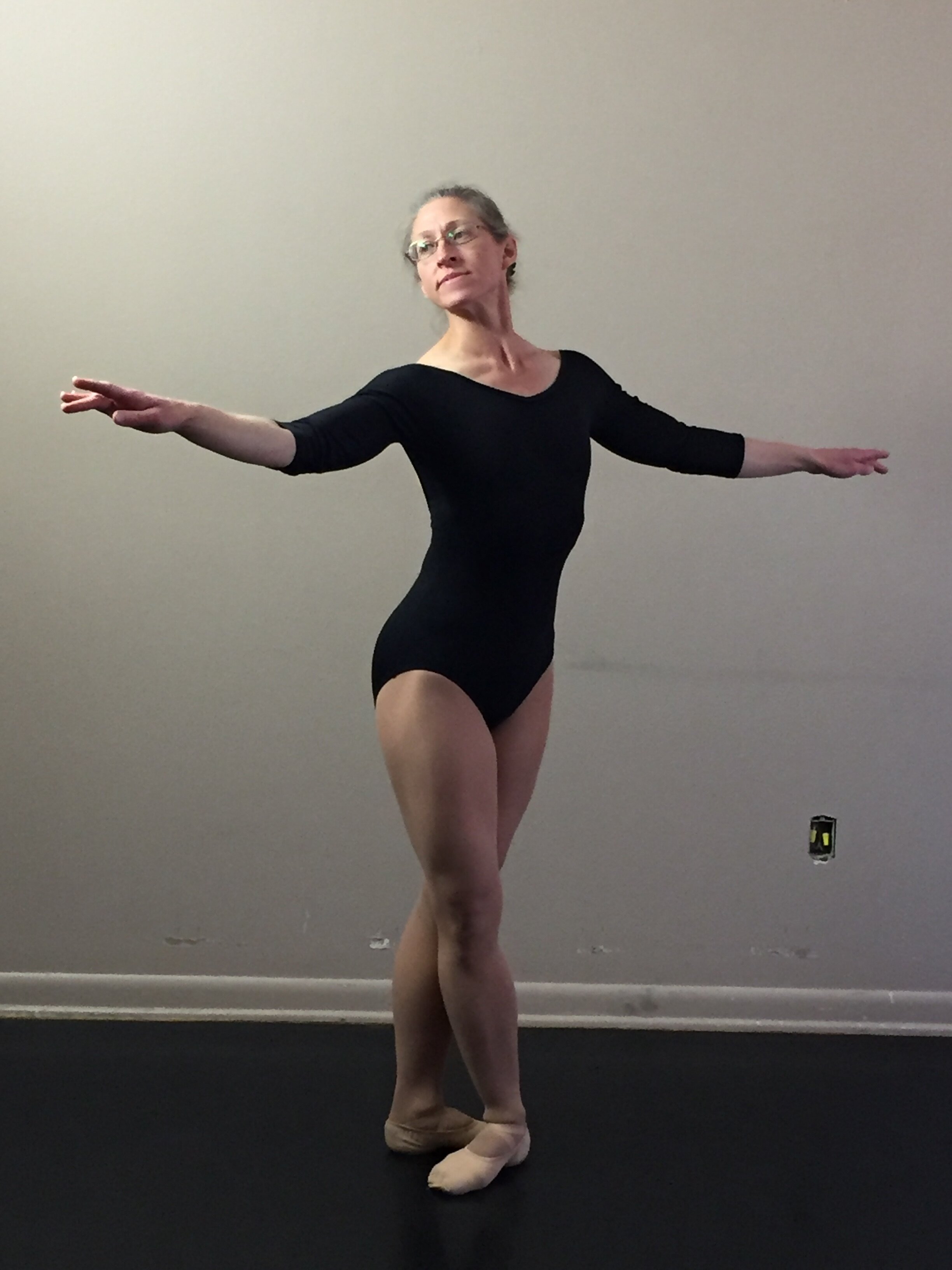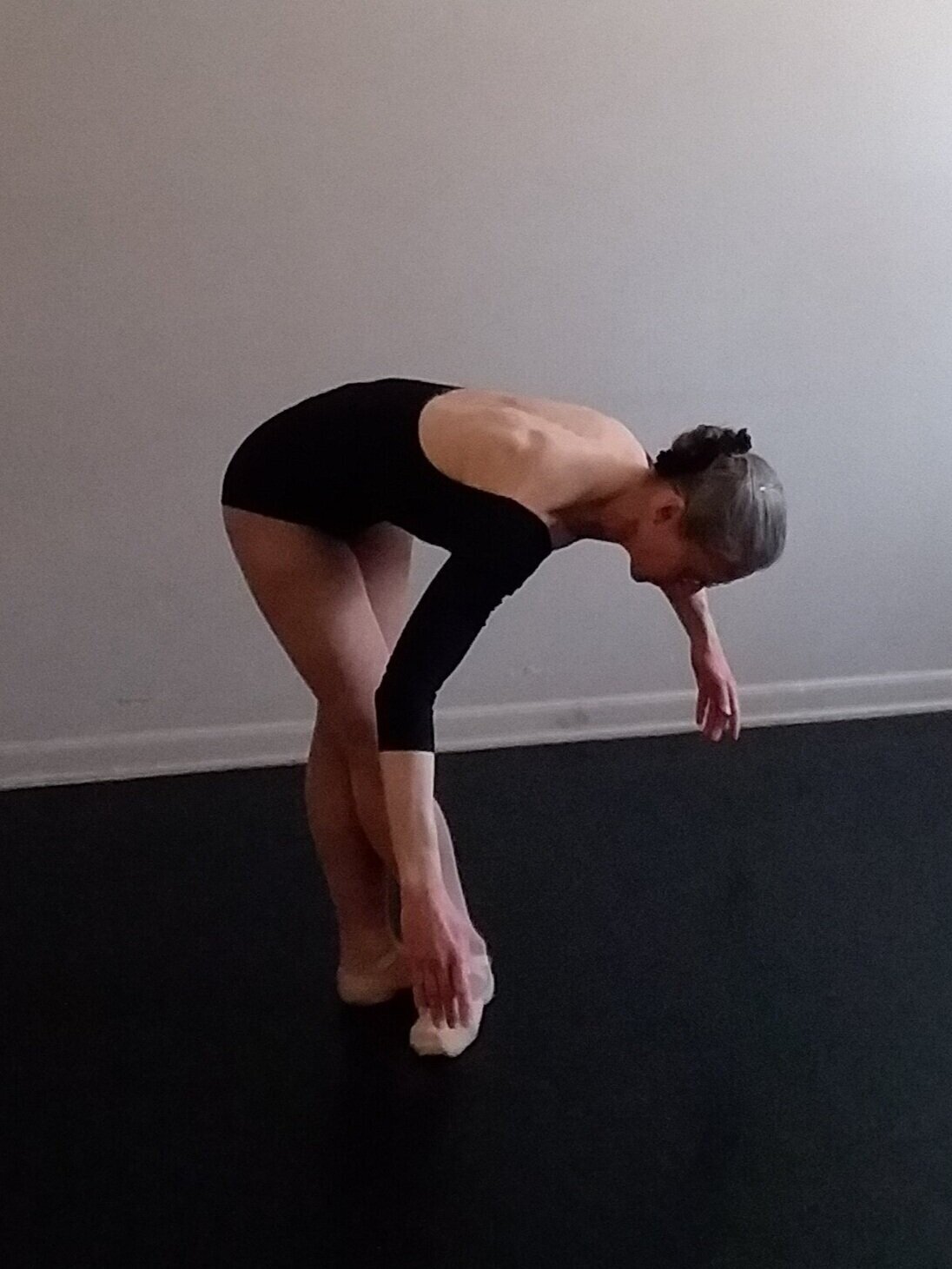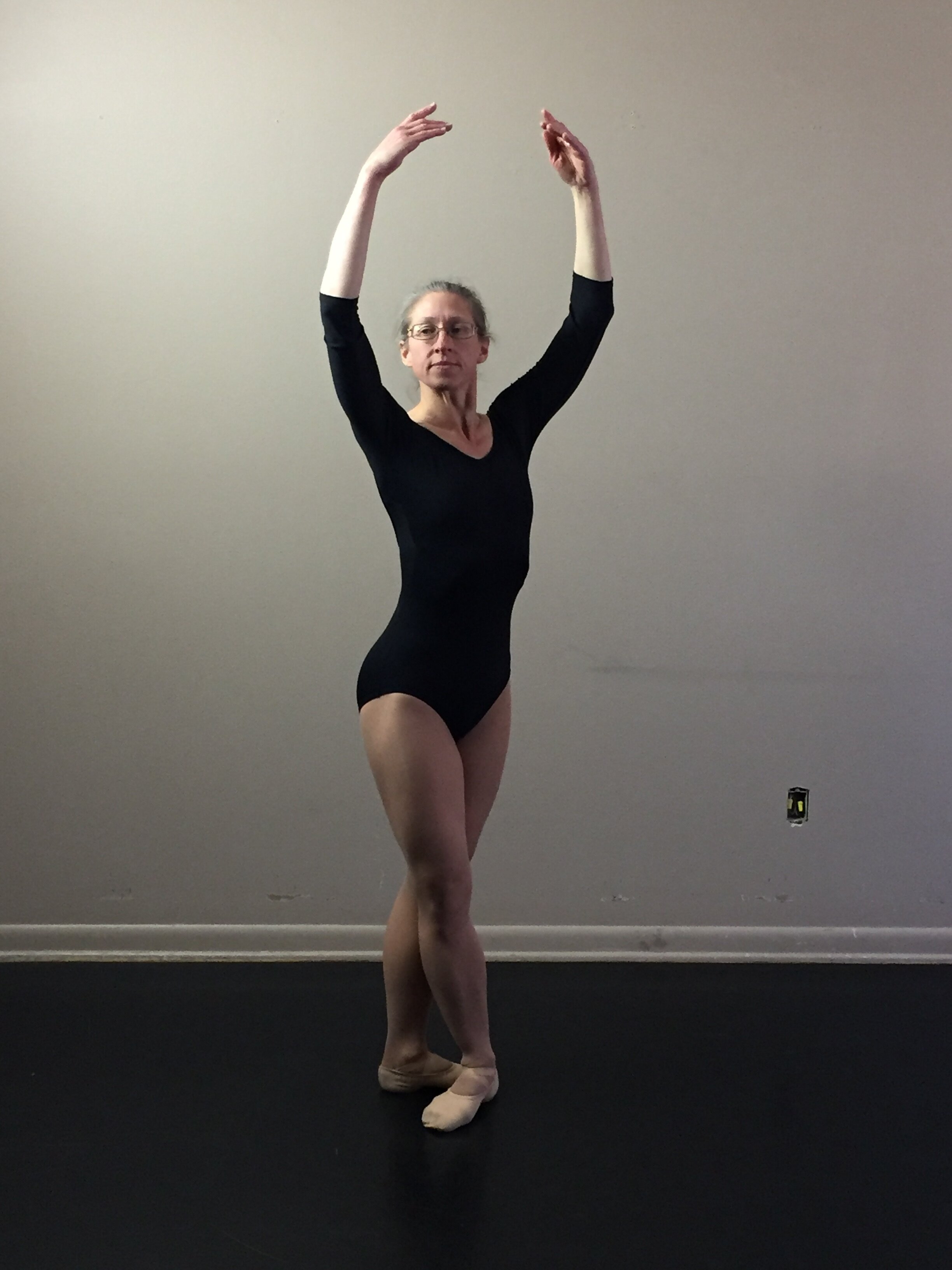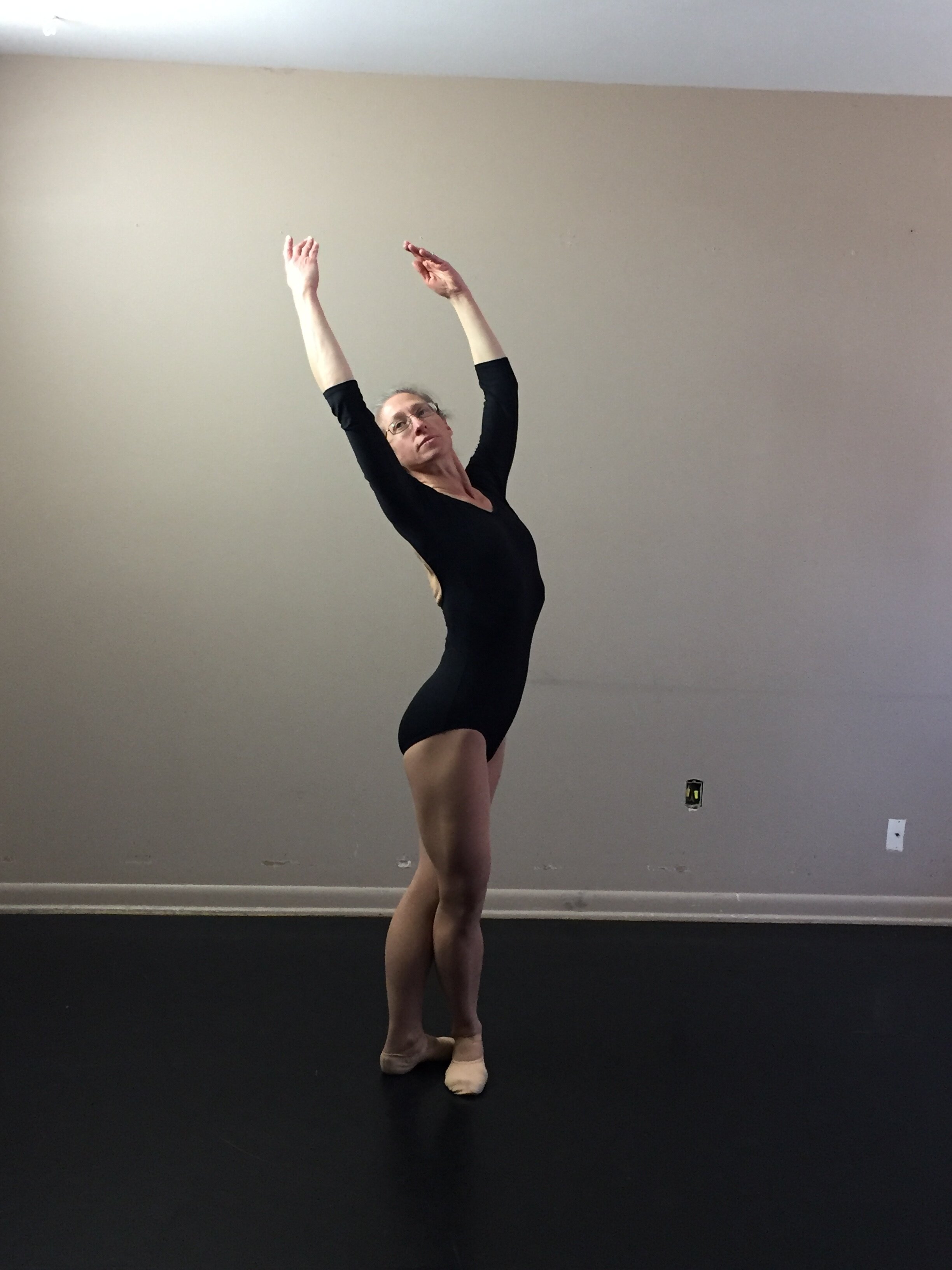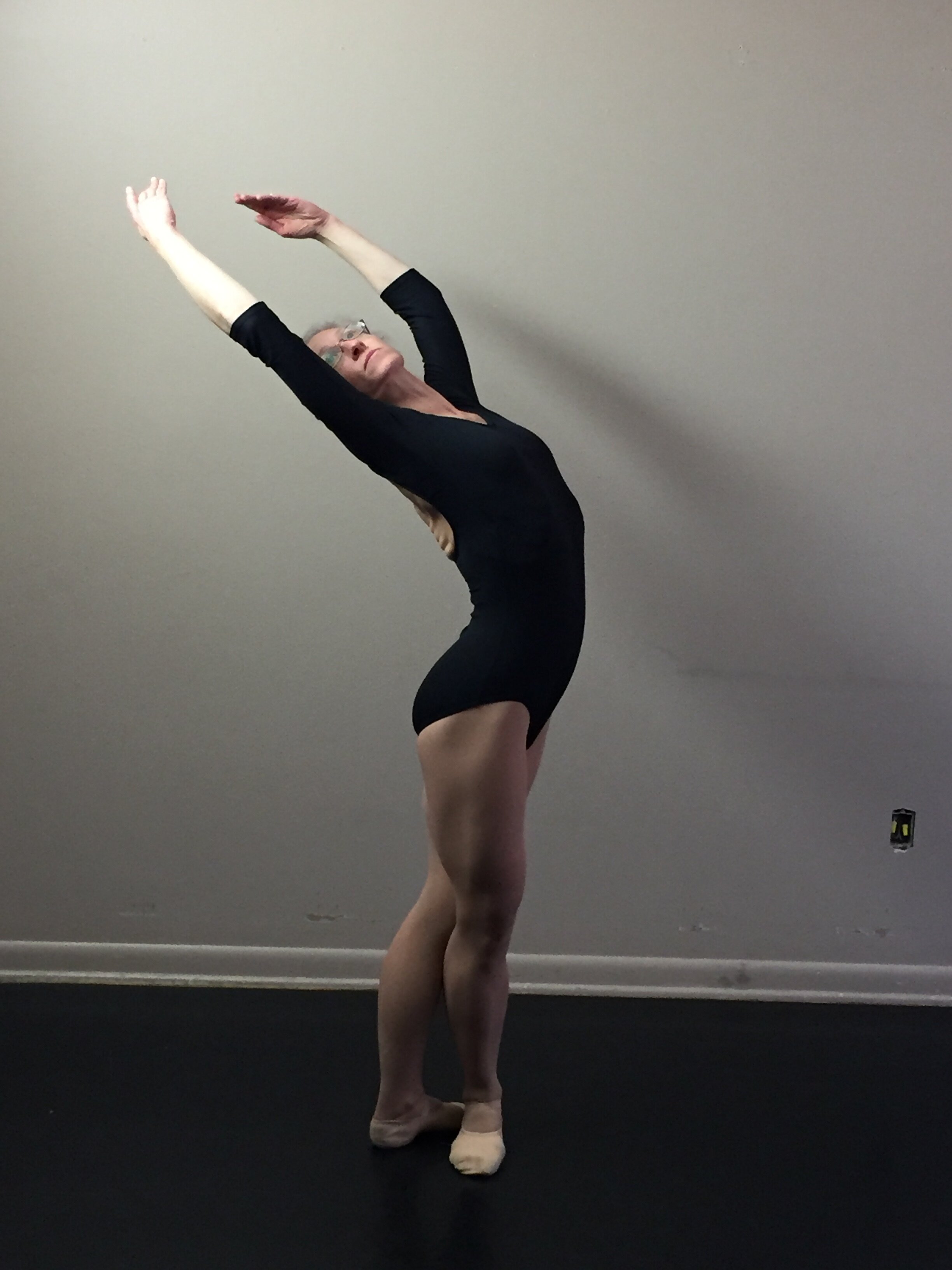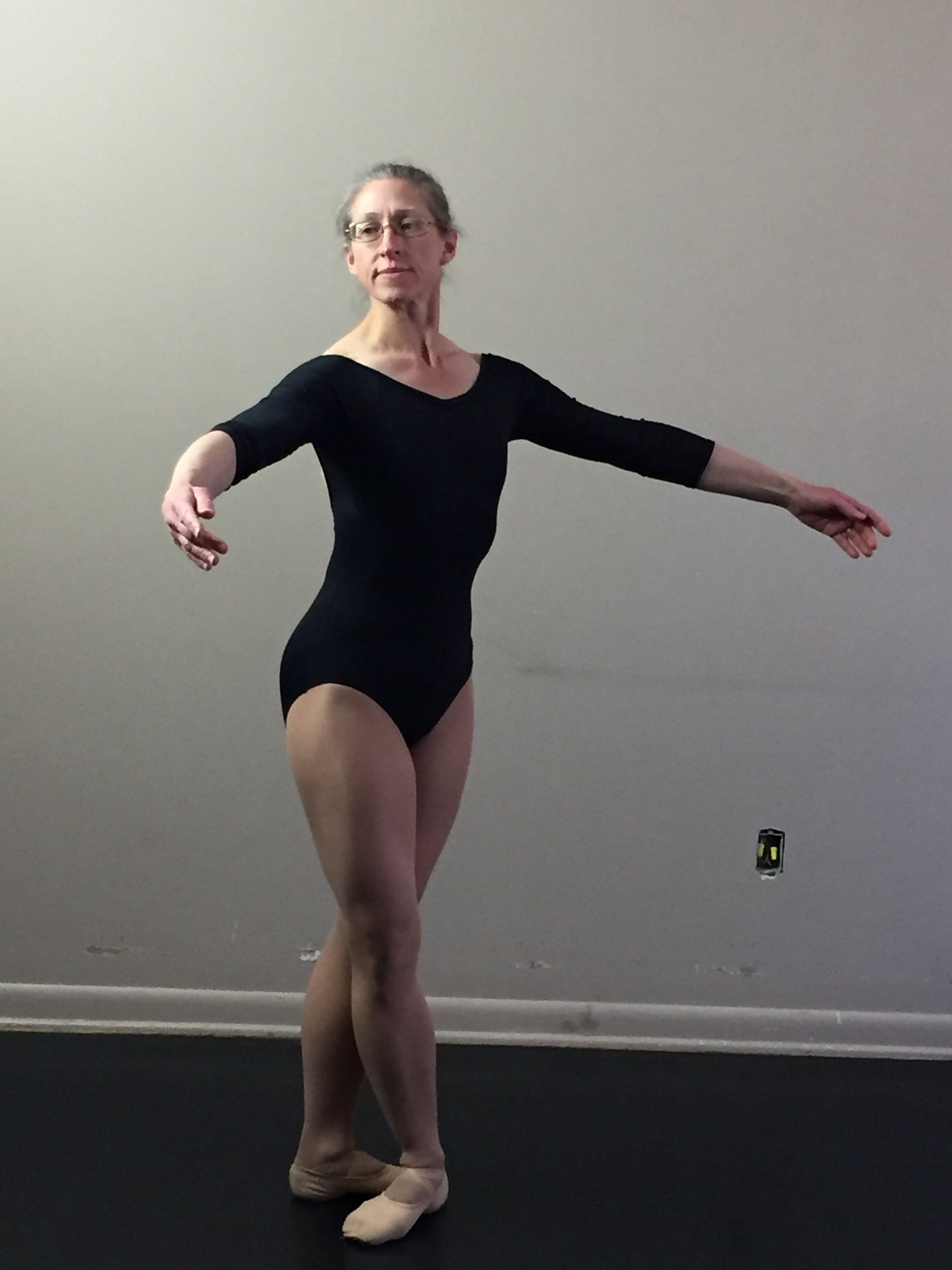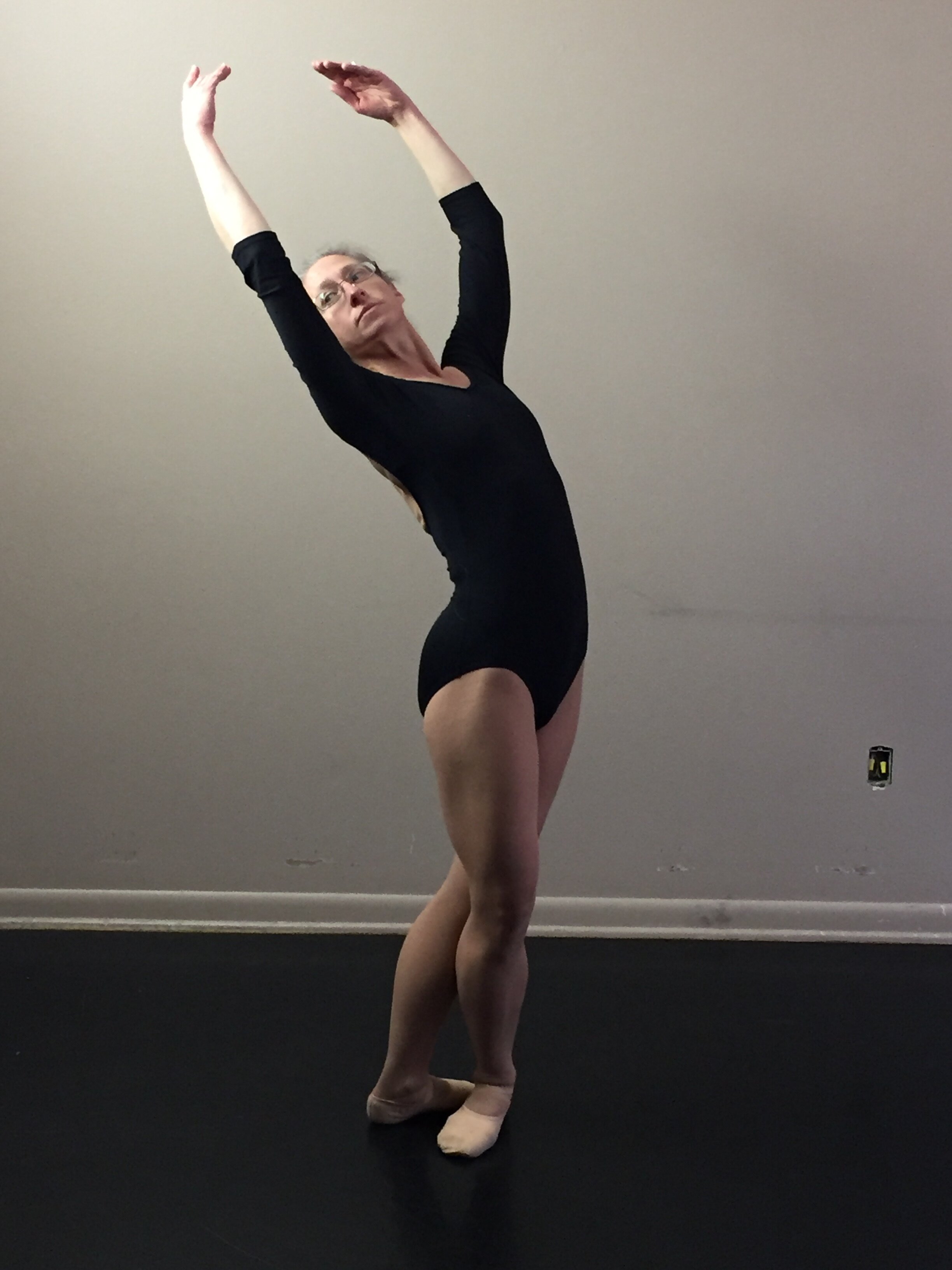Vaganova Third Port de Bras
Continuing our series of Port de Bras blogs, it is now time to cover Vaganova 3rd Port de Bras! In this exercise, the dancer involves the full upper body along with the arms and head. It is not only an exercise in developing the grace of the arms and the coordinated movement of the head, but also the control of the core and the flexibility of the hamstrings and the back.
The dancer begins standing with feet in 3rd or 5th position croisé with the arms a la seconde (2nd position). The movement begins with a small breath of the upper body that causes the hands and elbows to turn over such that the palms now face the floor and the elbows drop just slightly. With this breath, the eyes are on the downstage hand and the head tilts slightly back with a very small lift of the chin.
“Breath” before bending forward
The dancer begins to fold forward by drawing the abdominals inward and bending very slightly at the waist to reduce the natural curve of the spine into a flatter back. The dancer must be careful not to arch the back at the beginning of this folding forward. To do so releases the engagement of the abdominals and sends the hips backward.
Correct - Abdominals drawn in at beginning of forward bend
Incorrect - Back arching at beginning of forward bend
After drawing in the abdominals to begin the forward bend, the movement flows into a folding at the hip joint until the dancer’s chest is as close to the legs as possible. Meanwhile, the arms are folding down with the body such that they arrive in “preparatory” position (i.e. they are in an oval shape with the hands nearly or completely touching the floor at the bottom) at the same moment that the dancer has reached the full body bend downward. The dancer should be careful not to let the arms hang behind the body as the body begins to fold forward. At the bottom of this stretch, the dancer should let his/her head face into the legs rather than looking at the floor or the feet. This completion of the bend with the head gives a further stretch up the backs of the legs as well as completing the flow of movement and the line.
Arms come down with the body as dancer bends forward
Focus is towards legs at the bottom of the forward bend
Having achieved the full forward bend of the body, the dancer now begins to return the upper body to its vertical alignment. This begins with the engagement of the core and back muscles bringing the upper body into a flat back position with the arms across from the diaphragm in a circular 1st position. The hamstrings and glutes and rotators then engage to draw the dancer the remainder of the way up to vertical as the arms continue their trajectory upward, arriving in 3rd position overhead as the dancer’s upper body reaches vertical. The head is now turned downstage with the eyes turned to the forearm of the downstage arm.
Upon returning to vertical, the focus is on the downstage forearm before beginning the cambre back
Correct - head and body coming up together
Incorrect - Head leading the body upwards
From here, the dancer begins a cambré back. Another slight breath of the upper body involves a tiny dip forward of the head and hands which then immediately begin the arch back. The focus remains downstage into the forearm and the elbows remain pressed wide open to allow to face to be seen above the arms during the arch of the back. The top of the head and the hands lead this arch while the waistline is strongly activated to remain lifted and long. The arch back continues to the base of the shoulder blades. Depending upon the flexibility of the dancer’s back, this arch backward may continue to go lower into the back, but there must remain a strong engagement of the lower back muscles such that the dancer does not “drop” into the lower back, causing a subsequent displacement of the hips and bending of the knees.
Having reached the culmination of the backward arch, the dancer begins the return to vertical from the base of the curve, radiating upward to the head which is last to return to vertical. As the dancer arrives at vertical, the arms open to 2nd position as the eyes follow the downstage hand.
Some Common Pitfalls to watch out for:
incorrect - Elbow forward obscuring face
Incorrect - Head dropped back
Incorrect - sinking into lower back causing displacement of hips and knees
Incorrect - Tailbone poking out behind


